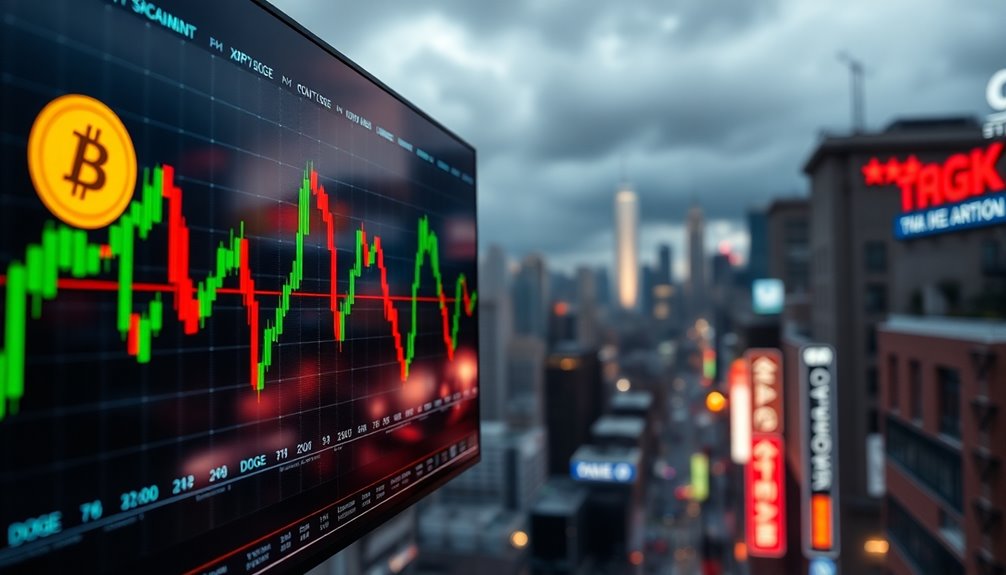You've seen how the crypto market reacts to global events, and the recent trade tensions are no exception. With Trump's trade war escalating, major cryptocurrencies like Bitcoin, XRP, and DOGE have taken a significant hit. As tariffs roll out, the volatility is hard to ignore. What does this mean for investors and the future of digital assets? The implications could be more profound than you might think.

As the trade war escalates, you might notice how the crypto market reacts with heightened volatility. Following Trump's tariff announcements, major cryptocurrencies like Bitcoin, XRP, and DOGE experienced significant price drops, reflecting a broader market response to economic uncertainty. On the day tariffs were announced, the crypto market lost around $2 billion, with some estimates suggesting liquidations exceeded $10 billion. For investors like you, these figures illustrate just how sensitive digital assets have become to macroeconomic events.
New tariffs on Chinese imports led to a sharp 10% drop in XRP and DOGE, mirroring the losses seen in Chinese stocks. Bitcoin didn't escape unscathed either, falling by 7% to nearly $79,000. This marked a decline of almost 30% from its January peak, leaving many traders anxious about the future. The overall crypto market capitalization decreased by 8%, bringing it down to $2.7 trillion, and signaling the impact of global economic concerns that now loom large.
New tariffs triggered a 10% drop in XRP and DOGE, with Bitcoin falling nearly 30% from January's peak, highlighting market vulnerability.
The trade war has heightened fears of a potential recession, which can affect consumer spending and global trade flows. You might find yourself questioning how these tariffs will influence inflation and economic stability. Federal Reserve officials have expressed concerns regarding the inflationary potential of large-scale tariffs, leaving many in the financial community anxious about the Fed's next move.
The ongoing trade conflict reflects broader shifts in global economic policies, making the crypto market increasingly vulnerable to these external shocks. Despite some regulatory shifts in favor of crypto, such as the SEC's recent pro-crypto policies, macroeconomic factors seem to dictate market sentiment. While there's a push for regulatory clarity, the looming threat of inflation and economic downturns overshadows the optimism generated by pro-crypto developments.
You may also notice how even meme coins, including those associated with Trump, reflect a broader cultural and economic trend. Bitcoin's price did experience a brief recovery after some tariffs were postponed, even reaching over $100,000 temporarily. However, China's retaliatory tariffs quickly squashed that rally, reminding investors like you of the volatile nature of this market.
With so many external factors at play, it's crucial to stay informed and agile. The trade war's impact on crypto isn't just a passing phase; it's a significant factor that reshapes the landscape of digital assets, influencing your investment decisions.











